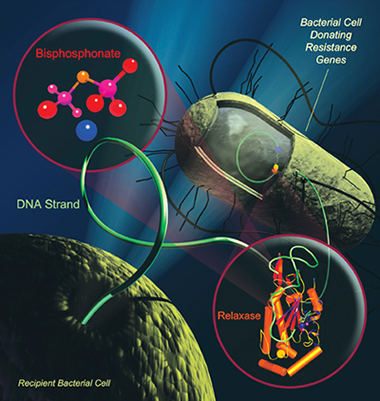Dr. Deborah Ben David, Infectious Diseases Unit, Sheba Medical Center, Tel Hashomer, and a member of the National Infection Prevention Unit, answered some questions regarding antibiotic resistance in Israel

Response to the article - The enemy among us By Marin McKenna
a question: What is the resistance status of Klebsiella in Israel relative to other European countries and relative to the USA?
Answer: The data in Europe varies from country to country - for example, the rate of resistance to most groups of antibiotics is high in Greece and Spain and low in Denmark and the Netherlands.
The rate of resistance in Israel is similar to the rate of resistance in Southern Europe: the resistance to 3rd generation cephalosporins among gram-negative bacteria is at a rate of 30%. Resistance to carbapenem is detected in about 5% of cases (there is a sharp decrease following the national intervention that began in 2007).
a question: What is being done in Israel to prevent the spread of infections? Is the activity done at a national level, or does each hospital adopt its own policy? Is there an obligation to report to any authority?
Answer: Following the outbreak of Klebsiella phenomenia resistant to carbapenem in all hospitals in Israel, a national infection prevention unit was established in March 2007. Following vigorous intervention, including the distribution of national guidelines for carrier isolation and daily reporting (presence in hospitals, new cases and compliance with guidelines) to the national unit and the hospital managements, a decrease was observed Sharp increase in the number of new cases (from 150 new cases per month to 30 new cases per month).
a question: What do you think about the Norwegian model, of avoiding as much as possible the use of antibiotics? Why don't we adopt it here?
Answer: Some health funds and hospitals have local plans, but a national plan has not yet been implemented. The National Infection Prevention Unit is formulating a plan for national monitoring of antibiotic use in hospitals and recommendations for wise use, but the plan, as mentioned, has not yet been activated.
a question: Why, when antibiotics are already used, especially in hospitals, is a cocktail not used, as in the treatment of AIDS, for example?
Answer: Administering a cocktail has been proven in AIDS and tuberculosis treatment to prevent the development of resistance and treatment failure. But in hospital infections, a cocktail does not prevent the development of resistance, so there is no recommendation to give combined treatment (on the contrary, it only causes the use of more groups of antibiotics).
a question: What actually happened in Germany in the spring of 2011 with the E. coli bacteria that contaminated the sprouts? Is it only a particularly violent strain or a strain that also has resistance to antibiotics?
Answer: both and - in addition to creating a toxin, the bacteria is also resistant to antibiotics. The bacterium contains an enzyme known as ESBL, which gives it resistance to antibiotics from the cephalosporin family.



4 תגובות
Hey
If possible, in articles of this type, instead of "Question" write the name of the newspaper/reporter for example "Scientific", and instead of "Answer" the name of the respondent for example "Dr. Ben David". Looks better in the eye...
important subject
Can someone answer the question:
Why using a cocktail of antibiotics does not help develop resistance in bacteria,
As opposed to using cocktails against a virus?